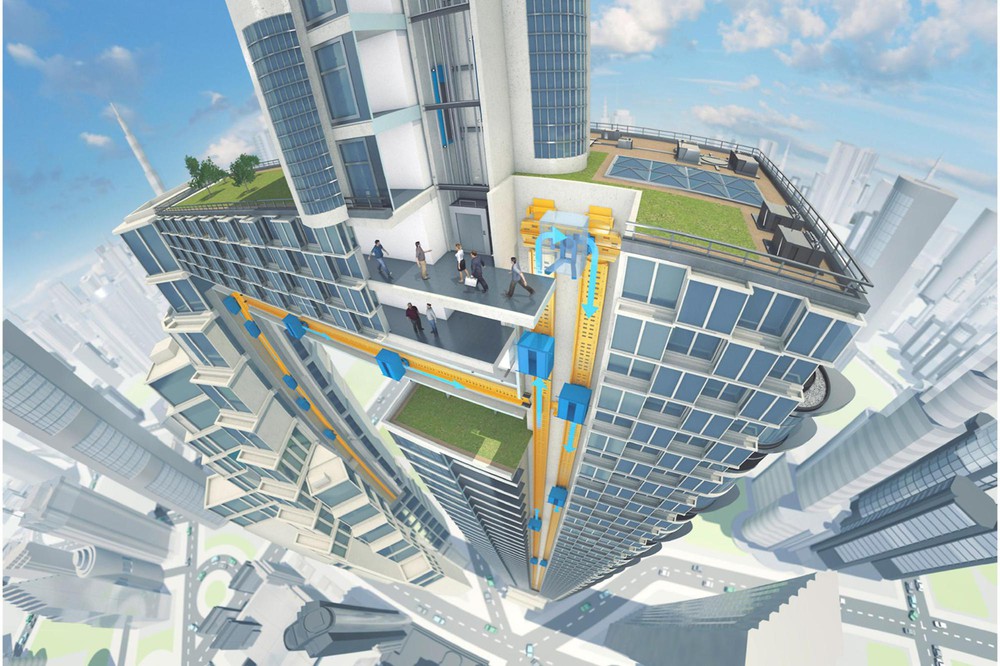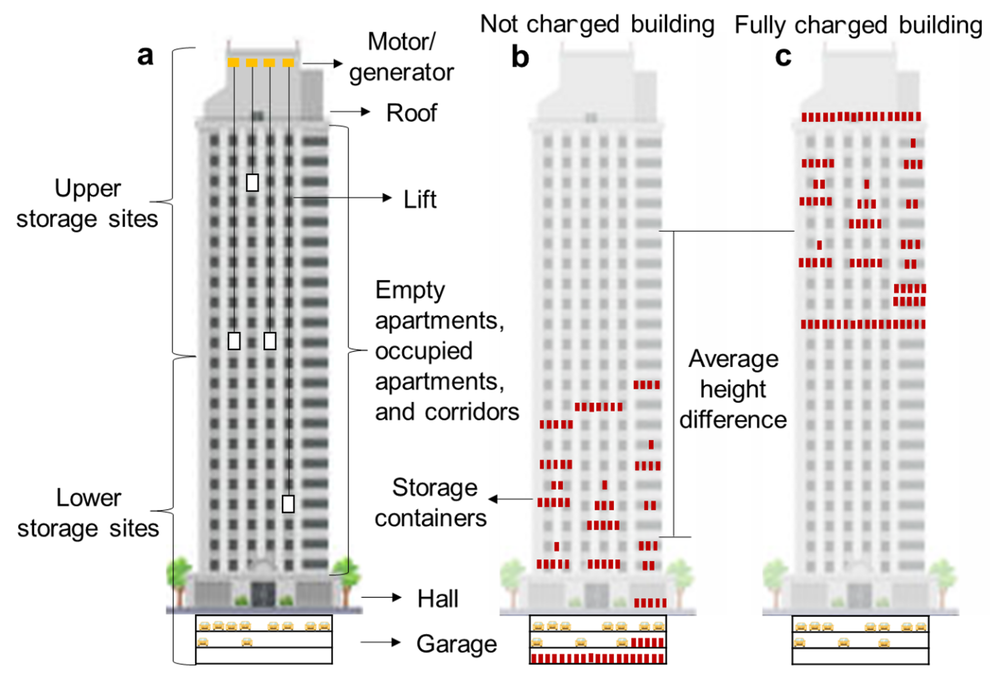The Researchers from the International Institute for Applied Systems Analysis (IIASA) launched the initiative for a system based on gravitationuse elevator in high-rise buildings to generate and store electricity.
The system, named Lift Energy Storage Technology – LEST, will operate on elevator currently available in buildings.

When not used to transport people, a self-propelled equipment will load containers of wet sand or other heavy materials into the elevator and transport them between the bottom and top floors. Many elevators are equipped with regenerative braking systems, which can collect energy. The regenerative braking system on elevators, most effective when carrying heavy loads, generates electricity that can be stored on site and used as needed.
Researchers estimate that there are more than 18 million elevators in operation around the world, and many of them are often idle for a significant amount of time.
The study’s lead author, Julian Hunt, said he got the idea after moving into an apartment on the 14th floor and spending a lot of time riding the elevator up and down.
Essentially, LEST will take advantage of the elevator’s all-time idle, by moving heavy objects – like large buckets of wet sand – from the bottom of the building to the top, when there is excess renewable energy. surplus and top-to-bottom, when that energy can be used or fed back into the grid.

The IIASA team proposed to build a series of robot Automatic towing for the job of getting heavy loads in and out of the lift. They can be stored along corridors, or in empty apartments or offices,…
There will be protection mechanisms so that the lift user is not in danger of using the ladder while it is in the process of moving heavy objects to generate electricity. Heavy objects must not be too bulky to prevent people from entering the elevator. The robot is also programmed to move out if guests enter and the elevator becomes overloaded.
Algorithms can determine the best time to lift heavy loads and when to harvest stored energy, without keeping the user waiting for an elevator.

LEST’s installed capacity energy storage cost is estimated at $21-128 per kWh, largely depending on the height of the building. For comparison, the US National Renewable Energy Laboratory has estimated the installed capacity cost of 4-hour battery systems at $345/kWh in 2020, which they expect will not fall below $100/kWh until the end of the 2040s.
The IIASA team estimates that current tall buildings could be converted to store 30 to 300 gigawatt-hours of electricity, the highest number that would be enough to run the entire city of New York for about a month on average. current consumption.
However, there are some barriers between this idea and reality. First, the bearing capacity of existing buildings’ ceilings will have to be considered. Operators also need to make room at the top and bottom of buildings to accommodate heavy loads and consider the amount of additional system wear and tear on existing elevator infrastructure.
Reference: Newatlast
at Blogtuan.info – Source: Soha.vn – Read the original article here



